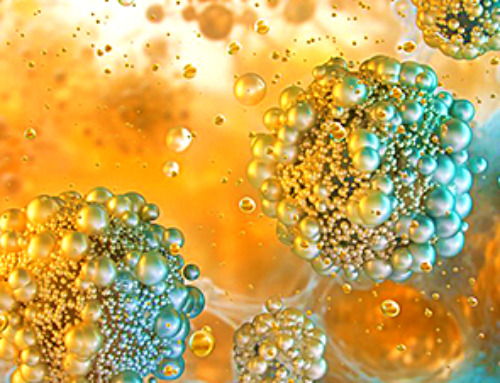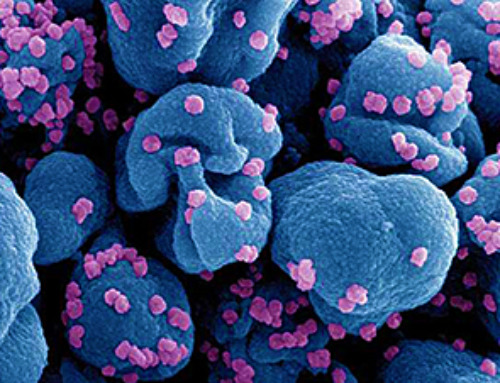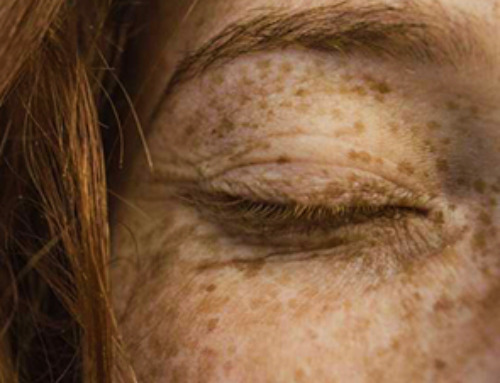Scientists at UNSW Sydney have created a new material that could change the way human tissue can be grown in the lab and used in medical procedures.
There are also human-made hydrogels that are used in a broad range of commodity products ranging from food and cosmetics to contact lenses and absorbent materials, and more recently in medical research to seal wounds and replace damaged tissue. While they might function adequately as space fillers that encourage tissue growth, synthetic hydrogels fall short in recreating the complex properties of real human tissue.
But in a research paper published in Nature Communications, scientists from UNSW describe how a new lab-made hydrogel behaves like natural tissue, with a number of surprising qualities that have implications for medical, food and manufacturing technology.
Associate Professor Kris Kilian from UNSW’s School of Materials Science & Engineering and School of Chemistry says the hydrogel material is made from very simple, short peptides, which are the building blocks of proteins.
“The material is bioactive, which means that encapsulated cells behave as if they are living in natural tissue,” A/Prof. Kilian says.
“At the same time, the material is antimicrobial, meaning that it will prevent bacterial infections. This combination lands it in the sweet spot for materials that might be useful in medicine. The material is also self-healing, which means that it will reform after being squished, fractured, or after being expelled from a syringe. This makes it ideal for 3D bioprinting, or as an injectable material for medicine.”
Surprise discovery in lockdown
Ashley Nguyen, a Ph.D. student in the UNSW School of Chemistry and first author on the paper, made this discovery during the COVID19 lockdown using computer simulations. Nguyen was looking for molecules that self-assemble—where they spontaneously arrange themselves without human intervention—and stumbled upon the concept of “tryptophan zippers.” These are short chains of amino acids with multiple tryptophans that act as a zipper to promote self-assembly, which have been dubbed “Trpzip.”
“I was excited to identify a unique peptide sequence using computational simulations that might form a hydrogel,” says Nguyen.
“After we returned to the lab, I synthesized the top candidate and was thrilled to see it actually form a gel.”
Nguyen says the discovery of this hydrogel has the potential to be an ethical alternative to the widely used natural materials.
“Natural hydrogels are used all over in society—from food processing to cosmetics—but require harvest from animals which poses ethical concerns,” she says.
“Also, animal-derived materials are problematic for use in humans because of the negative immune response that occurs. With Trpzip, we have a synthetic material that not only shows potential in many areas where natural materials are currently used, but also could outperform them in others, such as clinical research.”
Real world results
To test the viability of Trpzip in biomedical research, A/Prof. Kilian’s team partnered with researcher Dr. Shafagh Waters in the School of Biomedical Sciences at UNSW Sydney, who uses Matrigel—a hydrogel harvested from mouse tumors—for the culture of patient tissue in her research.
“Matrigel has some disadvantages in research use because every batch is different. A chemically defined alternative could be cheaper and more uniform, which would prove highly beneficial to biomedical research,” says Dr. Waters.
A/Prof Kilian notes that the natural materials business is a billion-dollar industry and says the team is keen to explore pathways to commercialization.
“We think that Trpzip hydrogels and materials like it will provide a more uniform and cost-effective alternative to animal-derived products. It would be a tremendous outcome if our material reduced the number of animals used in scientific research.”
The next phase of research will involve partnering with industry and clinical scientists to test the utility of Trpzip gels in tissue culture and explore applications that highlight the unique dynamic characteristics like 3D bioprinting and stem cell delivery.
More information: Ashley K. Nguyen et al, Hierarchical assembly of tryptophan zipper peptides into stress-relaxing bioactive hydrogels, Nature Communications (2023). DOI: 10.1038/s41467-023-41907-1
Journal information: Nature Communications
News
Scientists Melt Cancer’s Hidden “Power Hubs” and Stop Tumor Growth
Researchers discovered that in a rare kidney cancer, RNA builds droplet-like hubs that act as growth control centers inside tumor cells. By engineering a molecular switch to dissolve these hubs, they were able to halt cancer [...]
Platelet-inspired nanoparticles could improve treatment of inflammatory diseases
Scientists have developed platelet-inspired nanoparticles that deliver anti-inflammatory drugs directly to brain-computer interface implants, doubling their effectiveness. Scientists have found a way to improve the performance of brain-computer interface (BCI) electrodes by delivering anti-inflammatory drugs directly [...]
After 150 years, a new chapter in cancer therapy is finally beginning
For decades, researchers have been looking for ways to destroy cancer cells in a targeted manner without further weakening the body. But for many patients whose immune system is severely impaired by chemotherapy or radiation, [...]
Older chemical libraries show promise for fighting resistant strains of COVID-19 virus
SARS‑CoV‑2, the virus that causes COVID-19, continues to mutate, with some newer strains becoming less responsive to current antiviral treatments like Paxlovid. Now, University of California San Diego scientists and an international team of [...]
Lower doses of immunotherapy for skin cancer give better results, study suggests
According to a new study, lower doses of approved immunotherapy for malignant melanoma can give better results against tumors, while reducing side effects. This is reported by researchers at Karolinska Institutet in the Journal of the National [...]
Researchers highlight five pathways through which microplastics can harm the brain
Microplastics could be fueling neurodegenerative diseases like Alzheimer's and Parkinson's, with a new study highlighting five ways microplastics can trigger inflammation and damage in the brain. More than 57 million people live with dementia, [...]
Tiny Metal Nanodots Obliterate Cancer Cells While Largely Sparing Healthy Tissue
Scientists have developed tiny metal-oxide particles that push cancer cells past their stress limits while sparing healthy tissue. An international team led by RMIT University has developed tiny particles called nanodots, crafted from a metallic compound, [...]
Gold Nanoclusters Could Supercharge Quantum Computers
Researchers found that gold “super atoms” can behave like the atoms in top-tier quantum systems—only far easier to scale. These tiny clusters can be customized at the molecular level, offering a powerful, tunable foundation [...]
A single shot of HPV vaccine may be enough to fight cervical cancer, study finds
WASHINGTON -- A single HPV vaccination appears just as effective as two doses at preventing the viral infection that causes cervical cancer, researchers reported Wednesday. HPV, or human papillomavirus, is very common and spread [...]
New technique overcomes technological barrier in 3D brain imaging
Scientists at the Swiss Light Source SLS have succeeded in mapping a piece of brain tissue in 3D at unprecedented resolution using X-rays, non-destructively. The breakthrough overcomes a long-standing technological barrier that had limited [...]
Scientists Uncover Hidden Blood Pattern in Long COVID
Researchers found persistent microclot and NET structures in Long COVID blood that may explain long-lasting symptoms. Researchers examining Long COVID have identified a structural connection between circulating microclots and neutrophil extracellular traps (NETs). The [...]
This Cellular Trick Helps Cancer Spread, but Could Also Stop It
Groups of normal cbiells can sense far into their surroundings, helping explain cancer cell migration. Understanding this ability could lead to new ways to limit tumor spread. The tale of the princess and the [...]
New mRNA therapy targets drug-resistant pneumonia
Bacteria that multiply on surfaces are a major headache in health care when they gain a foothold on, for example, implants or in catheters. Researchers at Chalmers University of Technology in Sweden have found [...]
Current Heart Health Guidelines Are Failing To Catch a Deadly Genetic Killer
New research reveals that standard screening misses most people with a common inherited cholesterol disorder. A Mayo Clinic study reports that current genetic screening guidelines overlook most people who have familial hypercholesterolemia, an inherited disorder that [...]
Scientists Identify the Evolutionary “Purpose” of Consciousness
Summary: Researchers at Ruhr University Bochum explore why consciousness evolved and why different species developed it in distinct ways. By comparing humans with birds, they show that complex awareness may arise through different neural architectures yet [...]
Novel mRNA therapy curbs antibiotic-resistant infections in preclinical lung models
Researchers at the Icahn School of Medicine at Mount Sinai and collaborators have reported early success with a novel mRNA-based therapy designed to combat antibiotic-resistant bacteria. The findings, published in Nature Biotechnology, show that in [...]





















